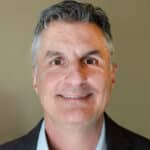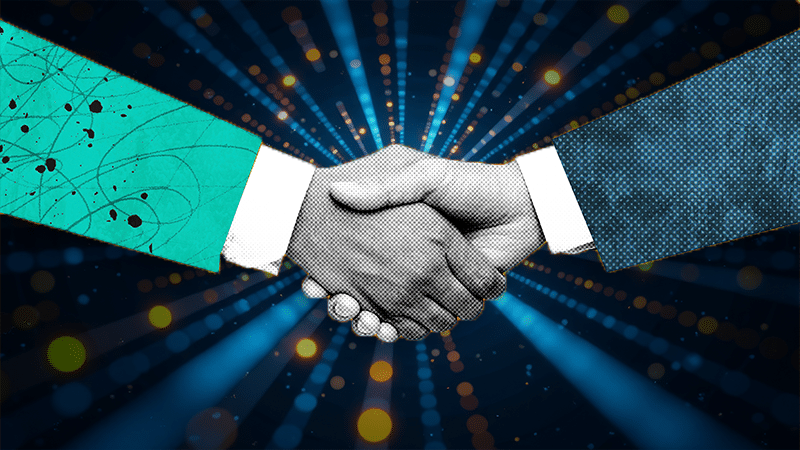I had the pleasure of conducting an interactive ‘Ask Me Anything’ (AMA) on May 3 to answer any burning questions and discuss all things related to master data management (MDM), data governance , data fabrics and — perhaps most importantly — framing these data investments around business value.
We had a spirited discussion and Q&A around critical topics like implementation best practices, common misconceptions, data architectures, stakeholder engagement for data management and more. We were excited to have over 100 attendees that day and it was wonderful to take their questions and provide some informative answers based on my own experiences.
I’ve included the highlights below but encourage everyone to watch an on-demand recording of the full event to get actionable insights and best practices based on my experience as a Senior Director Analyst at Gartner and an IT leader with 25 years of experience with real-world MDM and data governance implementations.
MASTER DATA MANAGEMENT IMPLEMENTATION BEST PRACTICES
As a Gartner analyst, the questions I received the most were, “What do we need to do to succeed?” or “What pitfalls do we need to avoid?” These are essentially the same question on different sides of the same coin. When speaking with business experts and breaking down the components that go into finding a solution, it really comes down to what I refer to as the “top five MDM program dependencies.”
Defined MDM Strategy and Approach
Before implementing MDM, you need a clear MDM strategy and an understanding of your overall approach. This boils down to knowing what success looks like for your organization. And to achieve that, you need specific focal points on the key business problems that you need to solve.
Narrow these down to one to three issues and define a strategy related to those desired business outcomes. Knowing what you want and devising a strategy to get there will help deliver desired results.
Quantifiable Business Case
You need a quantifiable business case for why you need MDM in the first place. This will refine the scope while setting expectations for stakeholders. Knowing what needs to be resolved will help organizations take notice of the actual value being delivered after implementation.
It provides specific and noticeable evidence as to how MDM is bringing significant value to your business. A quantified business case provides a clearer picture of the overall impact within your enterprise while justifying your investment.
Managing for Scope
It is crucial to manage your scope for MDM program success. Again, this pertains to having a razor-sharp focus on delivering specific business outcomes. Limit your scope to best drive your data priorities and intentions. Which domains need focus? What silos need to be broken? These are important things to consider before initiating your MDM strategy. Having the combination of your strategy, business case and initial scope will also enable you to take a more “agile” approach to deliver value from an MDM program incrementally over time.
A Focus on Data Governance
There needs to be some form of data governance whether formalized or not, though taking a more formalized approach is always preferred. The desired business rules and standards that need to be in place are the foundation of a governance program. They speak to the policies and procedures while defining an organization’s data quality and what goes into creating a unique record.
Executive Sponsorship and Aligned Incentives
Finally, there needs to be executive sponsorship. A big initiative often requires big support. This means having someone knowledgeable about MDM and its significance understanding and supporting this initiative every step of the way. This support from a senior executive for your MDM program must be meaningful and prolonged, and your entire support system and implementation team need to know what goes into the implementation process and what success looks like for your defined business case.
Connecting Business Outcomes to Data
I cannot overstress the importance of tying what is done from an MDM and governance perspective back to business outcomes and having a business case. The graphic below effectively illustrates this story of finding the connection between data quality improvements and business outcomes.
To do so, it is important to start at the top of the pyramid and see how these outcomes trickle down to that base foundation of individual data elements.
Here is a breakdown of the components below:
Business Outcomes
It is crucial to have your ideal outcomes in place before continuing the MDM and governance process. This can be as simple as one to three simple outcomes to achieve with enhanced data. The fewer the outcomes, the narrower your initial program scope, and the greater your likelihood of success.
How can you start moving if you do not know your destination? By defining your desired outcome(s), you will be able to prove and/or quantify the effects of your data improvement. These are typically outlined by the C-level executives or SVPs.
Aggregated Metrics
When it comes to quantifying success and proving how the implementation process drove your initiatives, it is essential to use some high-level metrics. These are the detailed measurements and reports of your progress.
For example, if your desired business outcome is to improve customer satisfaction, then metrics can measure things like customer retention, customer lifetime value, net promoter and much more. Directors are usually responsible for constructing these which then immediately play into the next portion below.
Process-centric Key Performance Indicators (KPI)
These KPIs fall more into the managers’ laps. If we continue with our business outcome of customer satisfaction, one way to measure it is by tracking the number of service inquiries per customer. Measuring performance over time helps improve our interactions with customers, which will correspond directly with our initial outcome. This then falls back to the base of the pyramid structure.
Individual Data Elements/Fields
From here, it is then time for data stewards to dig into the individual fields of data that need to be managed and governed to begin with. To do this, we rely on those key measurements we mentioned previously: business metrics, which are then quantifiably linked to corresponding data quality metrics. For example, if you improve your customer data quality by 5%, how much will your corresponding business metrics that depend on customer data also improve? Making this link is the key to building a business case.
Business and data quality metrics both need to be successfully managed as part of an MDM program. Collaborating with the right people and utilizing the right customer or product data allows organizations to focus on and build upon their most important data fields. But it is difficult to efficiently enhance this data without the desired outcome and reliable metrics/KPIs in place first. The sad truth is that businesses often do not care about data quality, but about what outcomes come from the enhanced data.
MDM AS A FOUNDATION OF THE DATA FABRIC AND DATA MESH
With MDM serving as the foundation for enhancing data, it is important to also understand the distinct types of architectural patterns that go along with critical data. Two examples of exceedingly popular data architectures are the data fabric and data mesh. Despite them both being these patterns, they are separate approaches. As a former Gartner Analyst, I would say that you cannot simply buy a data fabric or data mesh since both are inherently methods of managing data, and not distinct software platforms or solutions.
The data mesh is a decentralized pattern that allows for the domain-centric management of business rules and governance rules related to data. Meanwhile, the data fabric is a more centralized pattern that is all about using metadata to enable data to inform its own management and governance.
When discussing these two patterns, I would strongly argue that you cannot do either effectively within your organization without MDM. Keeping in line with our business outcome, if your CEO asks how many customers you have, there’s only one answer. This is where MDM will always come into play serving as a single view or single source of aggregated truth. Architectures simply do not function efficiently without an established MDM implementation.
TAKING AN AGILE APPROACH TO DATA GOVERNANCE
When approaching data governance, it all goes back to defining your MDM program and business outcomes. With these in place, a more agile governance approach can then be taken. As you approach your data from a governance perspective, it is important to ask whether the governance policies and procedures that enable your outcome can be carved into “bite-sized chunks.” Then you ask if this can be repeated for multiple outcomes.
Put another way, a data governance initiative can be a massive undertaking — but keeping your initial scope focused only on the governance policies and procedures required to support a limited-scope MDM initiative can be a fantastic way to take a highly agile approach to your governance program.
This approach allows an organization to formulate all its governance policies and procedures while bringing business value incrementally. That does not necessarily mean this process needs to take years — that is where agility comes in. By staying focused on the process and how it pertains to your outcomes, it remains more agile and efficient than a domain-centric approach. Keep your governance approach process-centric!
WATCH THE FULL RECORDING FOR EVEN MORE ACTIONABLE INSIGHTS
I cannot express enough how passionate I am about discussing MDM elements like these with business professionals. I always enjoyed consulting with data leaders as Gartner’s former Senior Director Analyst, and I look forward to bringing my passion for MDM to more of you as Profisee’s Head of Data Strategy.
These takeaways only scratch the surface of the many wonderful topics discussed during our live AMA event. I look forward to future events such as this where I can continue to communicate the ins and outs of establishing an MDM program and its significance within an organization’s infrastructure.
To learn more and watch the full AMA, stream the on-demand webinar here.
Head of Data Strategy at Profisee

Malcolm Hawker
Malcolm Hawker is a former Gartner analyst and the Chief Data Officer at Profisee. Follow him on LinkedIn.
















